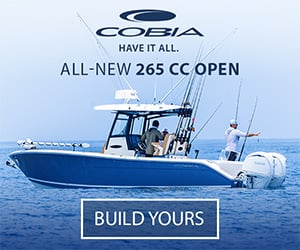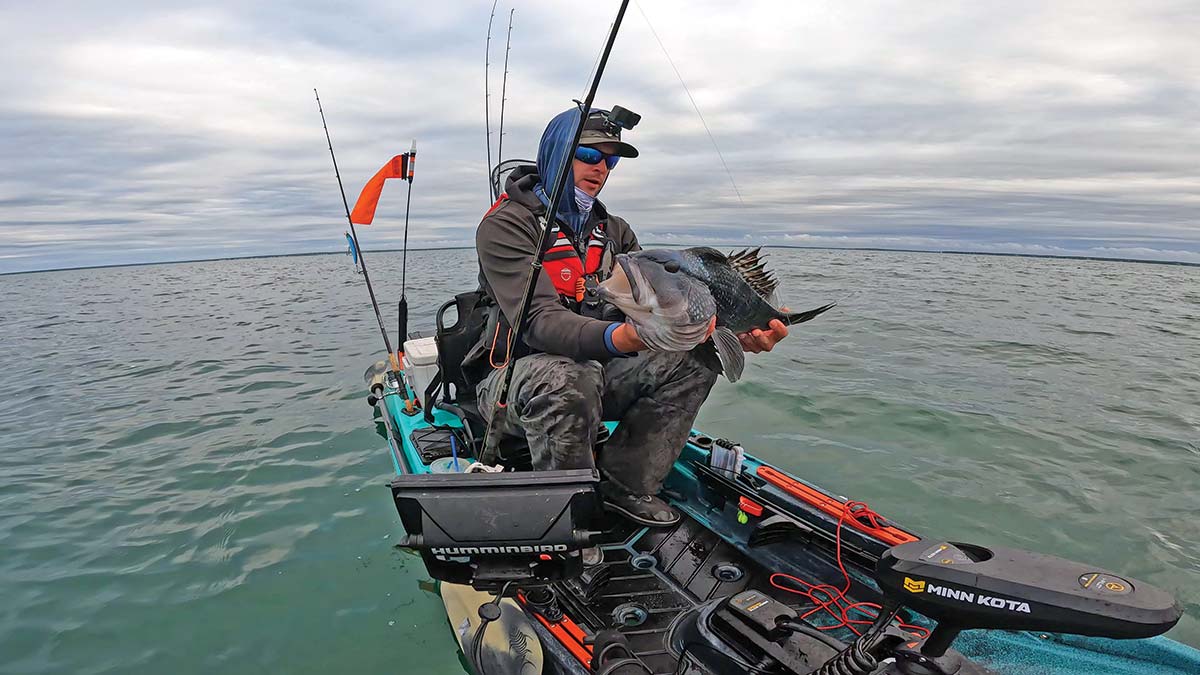
Arguably, some of the best tasting species we can harvest in the region are the popular bottom fish such as tautog, scup, and black sea bass; the issue for kayakers in particular, is that these fish tend to be very structure-oriented; with tautog and black sea bass, the best times of year to target them are also some of the windiest times to fish. That can be especially problematic when trying to pedal or paddle your way out to some of the more structure-rich inshore waters.
In a perfect world, every trip in the kayak would be a perfect slow drift that allows you to methodically cover structure using the lightest weight jig or rig you want. Sadly, this often isn’t the case and you have to fish whatever hand you’re dealt. Other factors may be at play with regard to how quickly you might drift including tidal current and wind drag.
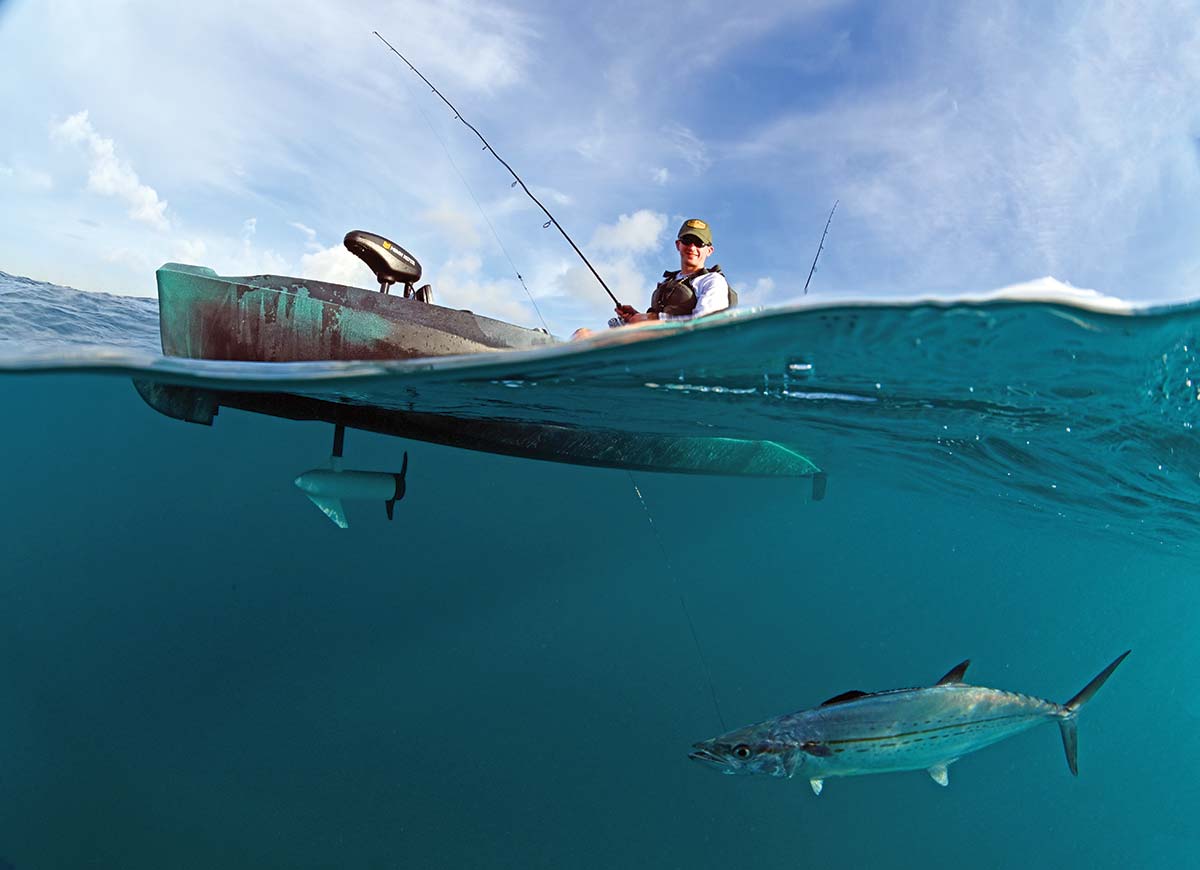
Paddle vs. Pedal
There are several ways to show that your drift speed is appropriate. One way to determine if the speed is correct is by watching your fishfinder to see how fast you are moving, your drift direction, and also that you are in fact over your structure you want to fish. Though difficult, any kayak, even the most basic, can stay on top of a desired piece of structure. In order to do this, you would need a decent GPS/fishfinder and a paddle that you are comfortable using in order to do this correctly. Depending on the species, it is not completely necessary to stop and stay in one spot using the paddle; you can usually get away with lightly back paddling the water while fishing with your dominate hand.
Another way to determine that your drift is at a good speed is by staying in contact with the bottom. For the most part, bottom fish relate – you guessed it – the bottom, so in order to effectively fish for them you will need to keep the bait within striking distance of where they live. When the drift is too quick for the rig you’re using, your bait will be pulled up and away from the bottom and out of the strike zone. Counteract the drift with your paddle until you feel the rig contact the bottom again. Effectively fishing like this is possible until you encounter wind approaching 10 knots. At this point, you will spend more time paddling than fishing.
Pedal-drive kayaks really shine when it comes to stemming the tide, slowing a drift or staying on structure. In my Hobie, I have fished for and caught sea bass and tautog without an anchor for years. The beauty of a pedal-drive is that you can stem the tide and wind easily using just your legs. Once you find that sweet spot that nullifies the wind and tide, you can focus on the fishfinder to ensure that you are on the structure. With the exception of making rudder adjustments to stay on the mark, your hands are free to fish!
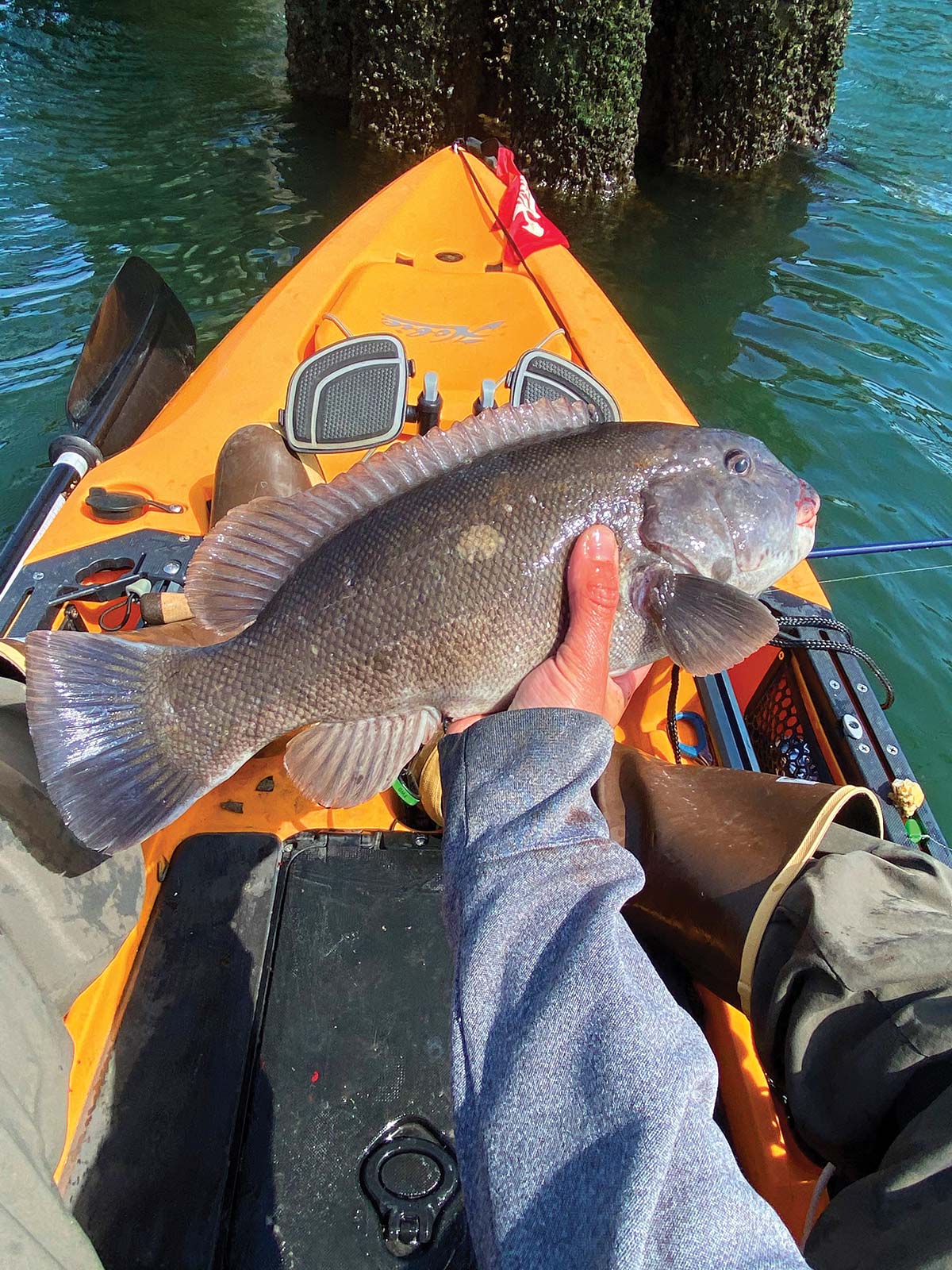
The Drift Sock
Drift socks are a great tool for staying over structure longer. I have been using drift socks for years and they have often made the difference between a successful or unsuccessful trip. Drift socks really prove their worth on my spring black sea bass trips where I tend to fish small isolated ledges. Those spring winds make it tough to get out to the better fishing grounds so the days that you do make it out, the wind typically isn’t calm.
If I find my drift to be too fast, I deploy the drift sock and typically see a reduction in drift speed of .2 to .3 knots. This can be the difference between a limit and a poor day of fishing. Drift socks will really help slow your drift in the wind, but they won’t change your speed in current.
Very little equipment is needed to make good use of the drift sock. You’ll need the drift sock, 15-feet of paracord, an anchor trolley and a cleat to tie it off to. If you can cut a quick drift by even a quarter-knot, you’ll have much more time to fish a good piece of structure The anchor trolley is important because it allows you to deploy the drift sock from the comfort and safety of the cockpit and after deployment, you can move the drift sock tether to the bow or stern (into the sea condition) for a safer drift. I do not recommend leaving the drift sock out perpendicular to your kayak as you risk taking a wave over the gunnel and losing stability.
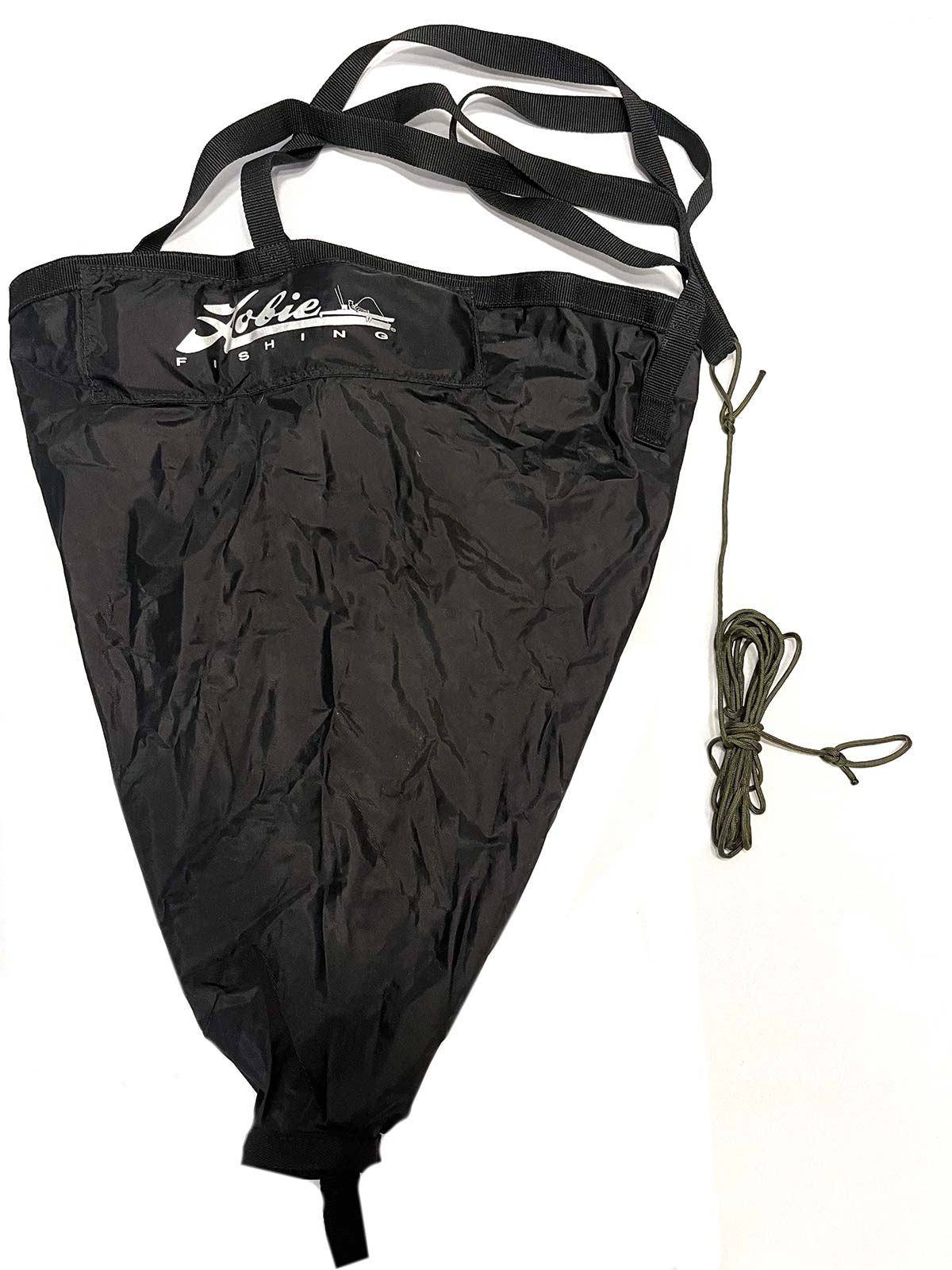
The Yak Anchor
It took me years to work up the guts to anchor up in my kayak. It’s a dangerous maneuver and special care must be taken. Things to be considered are current, sea state and boat traffic. If these factors are evaluated and found to be safe, dropping anchor is a great way to stay on structure. The anchor system I use on my kayak includes a 3-1/2-pound anchor, 150-feet of 550 paracord, a Yak Attack Sidewinder line holder and a float, in case I need to bail on the anchor in an emergency. This particular system is used in conjunction with the Hobie anchor trolley and a Yak Attack GT cleat to stay on structure.
Note that I tie the anchor line to the fluke side eye on the anchor. I run the line to the shank eye and zip tie it there. This is done for safety as if the anchor gets hung down I can break the zip tie and flip the anchor out of the snag. In the event that an emergency arises, I keep a serrated dive knife attached to my chest to cut the paracord and free myself from anchor. This system is also designed so I can untie the bitter end from my cleat in the event I need to bail quickly. The float will allow me to retrieve the anchor line at a later time once the emergency is over.
Anchoring on a small spot can be tough to get right on the first go. For this procedure, I keep my track lines on my GPS. I start by getting onto my spot and then pedal upwind for approximately 100 feet before dropping my anchor. I let the wind or current move me back around 50 to 75 feet before try to fetch the anchor. Once the anchor fetches, I release line slowly until I am just short of the spot I want to fish. Once the kayak settles, I can either take line or let some out to fine tune my resting spot. If you miss the spot the first time, all is not lost. If you’ve paid attention you will know what adjustments are needed to get it right the second time.
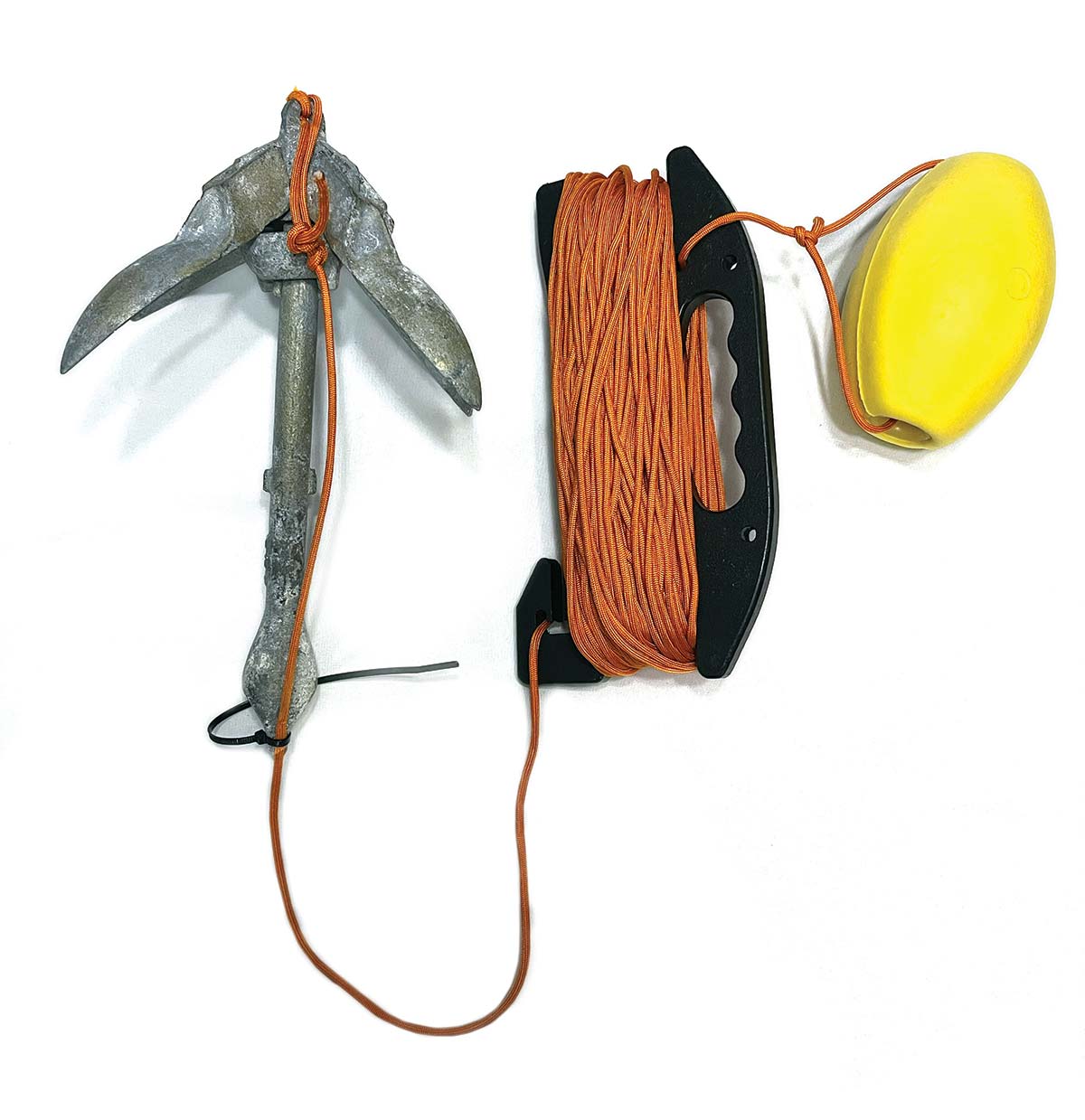
Using Spot Lock
This is the newest and possibly the easiest way to “anchor” up on structure. The spot lock feature for Minn Kota trolling motors has taken the bottom fishing industry by storm. If you find a piece of bottom structure that you want to fish, simply “waypoint” it on your fish finder and loop back and spot lock on it. Despite having several feet of play due to GPS error, you will be close enough to the spot to fish it effectively.
Tautog fishermen throughout the region have added trolling motors to their yaks in order to utilize this feature alone and it’s wonderful that there is an option from Old Town, the Autopilot Series, from which you can choose a stock kayak from the factory with the integrated Minn Kota system. Some issues with spot lock do occur though as vertical structure out of the water can affect the GPS signal resulting in poor results with spot lock. Another thing to consider is that due to the way spot lock works, you will face either into the wind or the current, whichever is stronger. This can make for an uncomfortable fishing day if the two are fighting each other.
| SAFETY FIRST |
| While using a pedal-drive or spot lock is certainly equipment specific, even the most basic of kayaks can be modified cheaply to use a drift sock or anchor system. Don’t forget to add a safety flag to your kayak if you’re fishing areas frequented by larger boats, your safety and enjoyment may depend on it. |
The bottom line here is that kayaks are very responsive tools that enable fisherman to fish more effectively, especially on structure. Controlling your kayak can be difficult at first, but by using a few of the techniques I’ve outlined here, you will be able to fish structure more effectively, slow your drift and even hit prime structure with pinpoint accuracy which will result in more fish landed at the end of the day.



